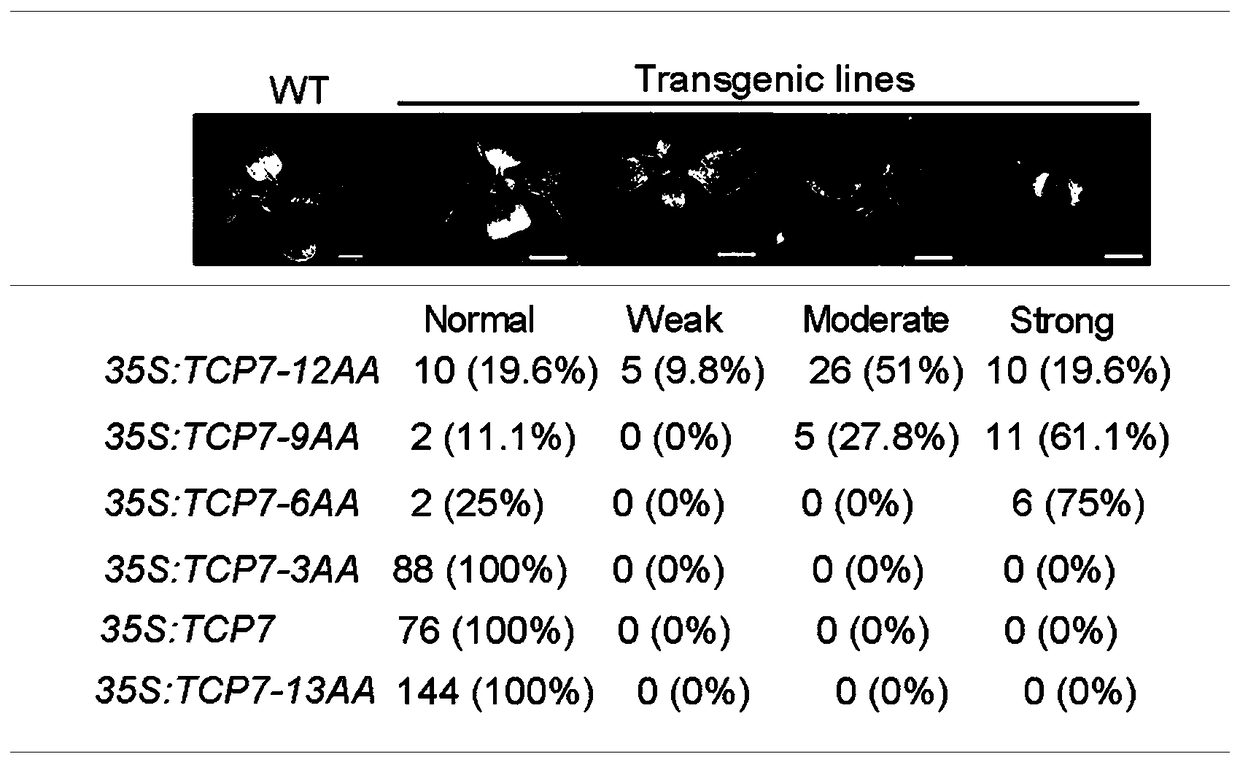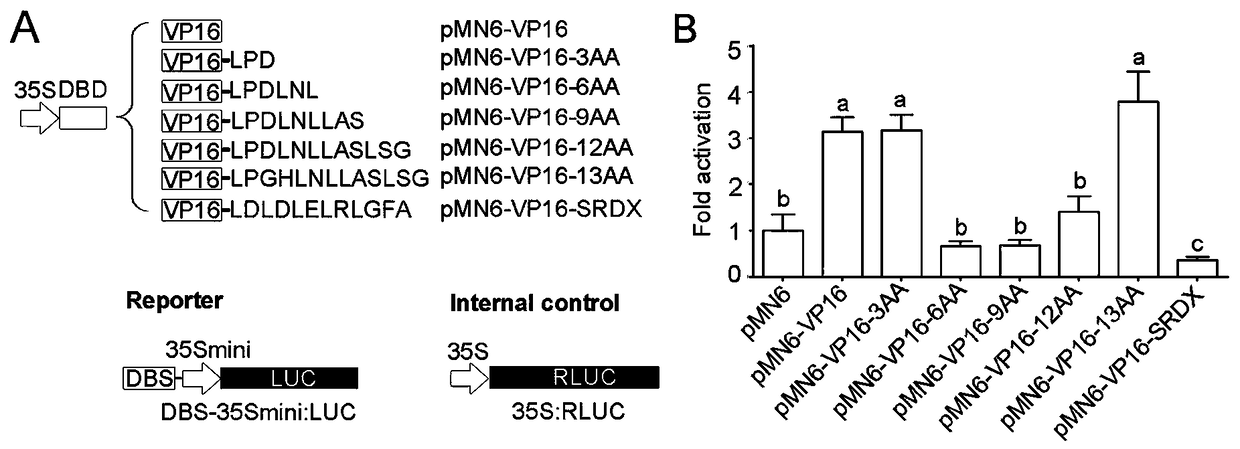Transcriptional repression domain as well as encoding genes and application thereof
A technology that encodes genes and structural domains, applied in the field of bioengineering, can solve the problems of inability to survive and low activity of transgenic plants
- Summary
- Abstract
- Description
- Claims
- Application Information
AI Technical Summary
Problems solved by technology
Method used
Image
Examples
Embodiment 1
[0021] Example 1. Construction of a recombinant expression vector based on pCIMBIA1300-35S.
[0022] Extract the RNA of Arabidopsis Col-0, reverse transcribe it into cDNA as a template, and perform PCR amplification with the following primers:
[0023] TCP7F: 5'GCTCTAGAaccATGTCTATTAACAACAAC 3' (SEQ ID NO: 4);
[0024] TCP7-3R: 5'CGGGATCCTTAATCCGGAAGACGTGGATCTTCCTCTCTTC 3' (SEQ ID NO: 5);
[0025] TCP7-6R: 5'CGGGATCCTTACAAATTAAGATCCGGAAGACGTGGATCTTCCTCTCTTC 3' (SEQ ID NO: 6);
[0026] TCP7-9R: 5'CGGGATCCTTAAGAAGCAAGCAAATTAAGATCCGGAAGACGTGGATCTTCCTCTCTTC 3' (SEQ ID NO: 7);
[0027] TCP7-12R: 5'CGGGATCCTTAACCGGATAAAGAAGCAAGCAAATTAAGATCCGGAAGACGTGGATCTTCCTCTCTTC 3' (SEQ ID NO: 8);
[0028] TCP7-13R: 5'CGGGATCCTTAACCGGATAAAGAAGCAAGCAAATTAAGATGACCCGGAAGACGTGGATCTTCCTCTCTTC 3' (SEQ ID NO: 9);
[0029] Insert the fragments into the pCIMBIA1300-35S vector Xba I and Bam H I restriction site 35S:TCP7-3 / 6 / 9 / 12 / 13AA Six sets of recombinant expression vectors.
Embodiment 2
[0030] Example 2. Construction of transformants.
[0031] After the obtained six sets of recombinant expression vectors were sequenced correctly, the constructed plasmids were respectively transformed into Agrobacterium GV3101 to obtain transformants.
Embodiment 3
[0032] Embodiment 3, acquisition of transgenic plants.
[0033] Transgenes were introduced into Arabidopsis thaliana by flower dipping method (Clough and Bent, 1998). The specific steps of the soaking method are as follows:
[0034] Pick a single colony and inoculate it in 5 ml YEB (Rif 50 mg / L, Kana 100 mg / L) and culture overnight at 30°C. Inoculate at 1:100 in 300 ml YEB (Rif 50 mg / L, Kana 100 mg / L) and expand until OD600=1.0-1.2.
[0035] To collect the bacteria, collect the bacteria into a 500 ml sterilized centrifuge bottle, centrifuge at 4000 rpm at room temperature for 20 min.
[0036] Discard the supernatant. Resuspend the bacteria in the transformation medium (1 / 2MS, 5% sucrose, 0.5 g / L MES, 10 μg 6-BA, adjust the pH to 5.7 with KOH, ready-to-use, without sterilization), add an appropriate amount of transformation medium to OD600=0.8-0.85. Add 0.03% silwet L-77.
[0037] Remove the siliques and flowers from the plants. Compact the soil with 4-6 pots of plants r...
PUM
 Login to View More
Login to View More Abstract
Description
Claims
Application Information
 Login to View More
Login to View More - R&D
- Intellectual Property
- Life Sciences
- Materials
- Tech Scout
- Unparalleled Data Quality
- Higher Quality Content
- 60% Fewer Hallucinations
Browse by: Latest US Patents, China's latest patents, Technical Efficacy Thesaurus, Application Domain, Technology Topic, Popular Technical Reports.
© 2025 PatSnap. All rights reserved.Legal|Privacy policy|Modern Slavery Act Transparency Statement|Sitemap|About US| Contact US: help@patsnap.com


